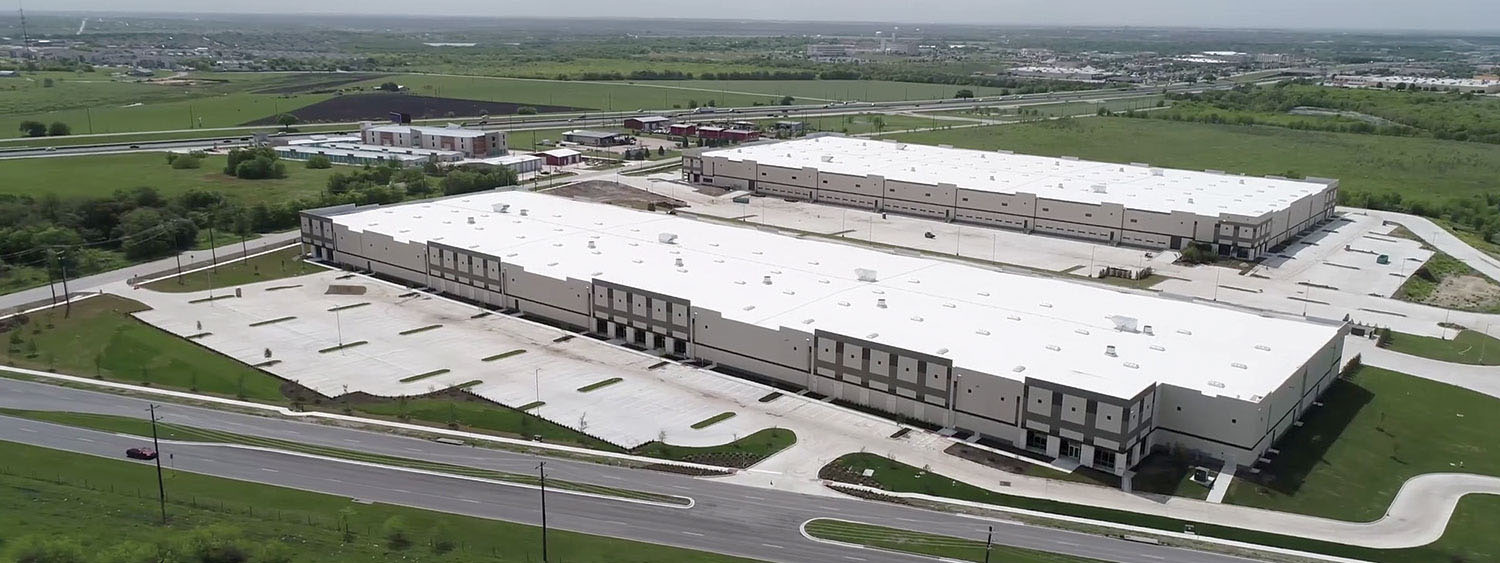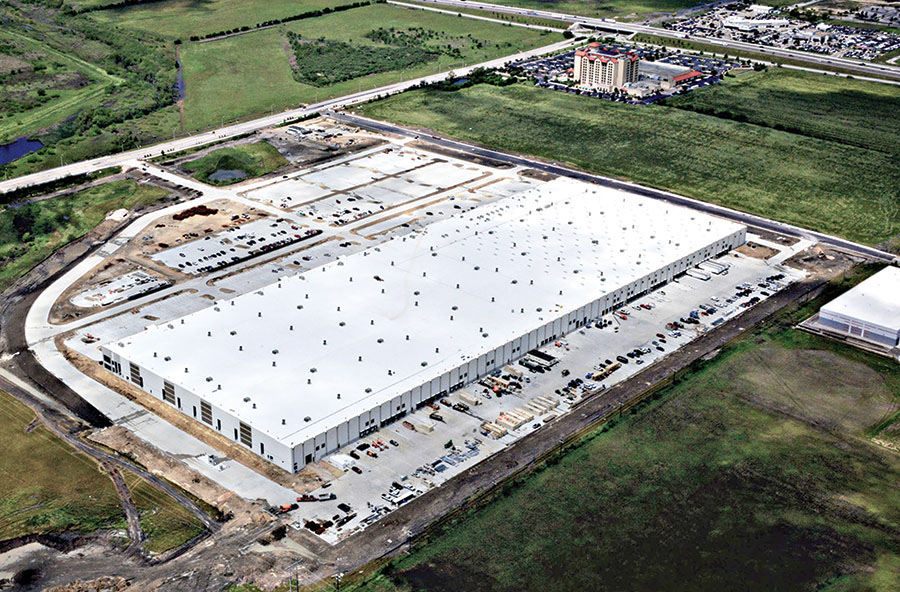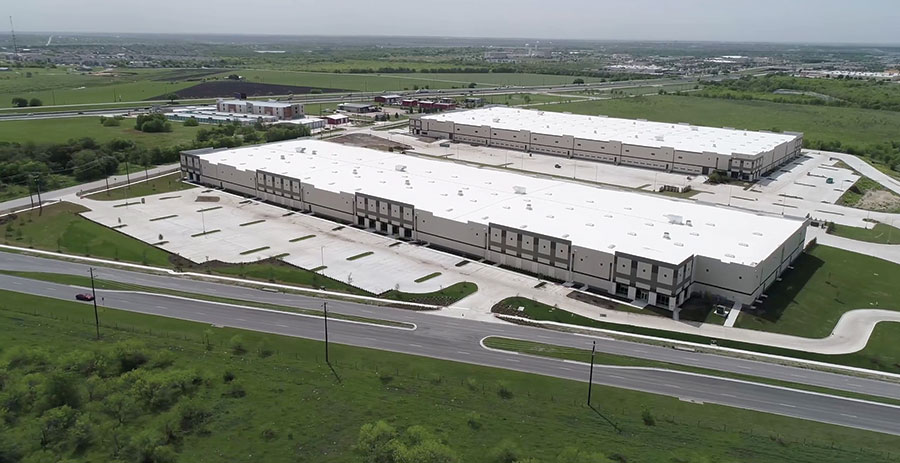Record-breaking demand for warehouse and DC development
Despite the scares COVID-19 has hurled on other industries, e-commerce has ensured high demand for warehousing, distribution and fulfillment.


Unlike many other segments of the economy, warehouse and distribution center (DC) development is not only withstanding the widespread economic impact of COVID-19, it’s thriving. In fact: It’s red hot. Companies can’t find space fast enough and developers can’t build DCs quickly enough to meet demand.
“The market is thriving, and with it, record high transaction volume (new leases, user sales and renewals), record high rents, a vacancy of 4.7%, and 42 consecutive quarters of positive absorption,” reports James Breeze, senior director, global head of Industrial & Logistics Research for CBRE.
Robust demand for industrial product has kept developers busy. “At the end of the third quarter of 2020, more than 312 million square feet was under construction [nationwide] and 37% of this was already preleased—the highest rate of pre-leasing in over a year,” Breeze exclaims.
Other noteworthy trends include climbing rents, annual absorption inching close to the 200-million-square-foot benchmark, and record-high deliveries, reports Mehta Randhawa, director of U.S. Industrial Research, Jones Lang LaSalle Inc. (JLL).
As stay-at-home orders lifted, construction activity resumed, and deliveries spiked. Consequently, JLL data indicates that delivery of industrial space hit a record high in the third quarter of 2020, with completions totaling 97.4 million square feet. When all totaled, JLL expects that figure to hit 107.0 million square feet for 2020.
“We have seen a speed associated with innovation that was never known to us before COVID,” remarks Matt Powers, executive vice president, JLL. “Supply chain models are being transformed in days instead of months or years.”
E-commerce drives market
Driving this robust development surge is widespread adoption of e-commerce, accentuated by COVID-19.
“Most consumers are not only buying more product online; they are expecting it to be delivered in a timely manner,” says Breeze. Consequently, developers are seeing upwards of five years of e-commerce growth in one year—a trend, they say, that’s not going away, Further, companies are looking to carry higher inventory levels given that many incurred lost revenues by not having the inventory to meet demand.

Amazon’s 850,000-square-foot fulfillment center in San Marcos, Texas, employs over 3,000 workers at full capacity. Photo courtesy of the Greater San Marcos Partnership.
“Beyond carrying higher inventory levels to favor resiliency over efficiency in their supply chains, companies are also considering more diversified manufacturing locations,” says Carter Andrus, president of Central Region at real estate investment trust company Prologis. “In some cases, companies have become too efficient without having some buffer or just-in-case stock for events that happen.”
Andrus observes that these two trends have the potential to generate more than 500 million square feet of additional warehouse and DC space in the next two to three years. “This is overwhelming,” he says. “In terms of facility size, we see good momentum in all size categories, although activity has been best above 100,000 square feet with pronounced strength in the big box spectrum, with that being greater than 250,000 square feet.”
Earlier in 2020, Prologis saw some softness in spaces below 100,000 square feet, but now market demand for this space is also improving.
All of these factors continue to shift supply chain strategies to increase distribution centers throughout the country whether it’s a company shipping directly to the consumer, or the supplier to that company.
According to the seasonally adjusted date from the U.S. Department of Commerce, U.S. consumers spent an estimate $209.5 billion online in the third quarter of 2020. That’s a whopping increase of 36.7% from the same period in 2019 when e-commerce sales made up 11.2% of total sales.
Two of the biggest players in the retail world are Amazon and Walmart. Last year, Amazon was said to have over 100 fulfilment centers alone. The company typically builds fulfillment centers to feed regional sort centers as well as DCs, also known as delivery stations. Its fulfillment centers are typically 1 million-square-feet or more.
Walmart, known for running one of the largest distribution operations in the world, has over 190 DCs with more than 143 million square feet, according to global supply chain, logistics and distribution consulting firm MWPVL International Inc.
“Market drivers include population growth and competition shortening the last-mile with same- or next-day delivery,” states Powers.
Robert Van Geons, president and CEO Of Fayetteville Economic Development Corp., who promotes activity in his region of North Carolina, observes how onshoring of manufacturing, increased e-commerce and drastically altered consumer demand cycles have significantly increased the demand for warehouses and DC space.
“While new product is under construction, it’s nearly impossible to find a large [250,000 square feet+] quality building available between Washington, D.C. and Savanah,” Van Geons reports. “If it has good ceiling height and is close to a major interstate, it is off the market.”
Market movements
Markets both small and large across the country are benefiting, as neither have sufficient inventory to satisfy today’s need. Industry experts observe that demand for warehouse and DC space mirrors the size of the market. Andrus at Prologis reports that he has seen outperformance in key locations near large populations like southern California, NY/NJ, Dallas, Indianapolis, and Atlanta—to name a few.
Breeze reports that CBRE is witnessing the strongest demand coming from the Western United States.

Kyle Crossing is a two-building project totaling 535,113 square feet in Kyle, Texas. An Amazon sortation center and a Lowe’s distribution center are two tenants that will create hundreds of jobs at the facility. Photo courtesy of the Greater San Marcos Partnership.
“While the Inland Empire is the most in-demand market in 2020 for both transaction volume and net absorption, the West is performing the best because it is home to a majority of the top emerging markets in the country,” reports Breeze. “These markets include Phoenix, Las Vegas, Salt Lake City, and California’s Central Valley. These markets service growing population centers and occupiers are expanding into these markets in droves to service them.”
As for product type, CBRE points to the star of 2020 being spaces 100,000- square-feet and above. Demand has been record-breaking in this size range.
“At the end of November, a whopping 440 million square feet transacted in this size, already the most activity for a year, even with a month left to count,” Breeze states. “It’s also 26% higher than this time last year. While retailers and wholesalers make up a good chunk of this activity, the most active occupiers have been 3PLs with a 28% market share.”
For that reason, TexAmericas Center, developer of a large mixed-use industrial park just west of Texarkana, Texas, introduced a third-party logistics program in 2020 that John Sesler, vice president of logistics, says allows the company to meet the growing needs of current and future tenants.
“Included in this offering is our ability to retrofit existing available buildings to reduce the occupancy timeline and the availability of 36 miles of rail on our footprint,” he says. “The need for flexibility will continue to be at the forefront for both manufacturing and logistics companies as the world hopefully is entering the latter stages of the COVID crisis.”

Dansons selected Cumberland County, N.C., as the location of a new distribution and customer service facility. Photo courtesy of the Fayetteville Cumberland County Economic Development Corp.
Van Geons reports that in tertiary communities such as his, affordable wage rates and available land are attracting new speculative development. “While not as large as the biggest metros, we have more than enough workers to fill the positions needed, while also being close enough to leverage the demands of major population centers,” he says.
Fayetteville-Cumberland County, N.C. has seen its industrial vacancy rate drop by 60% in the last 36 months. Van Geons expects to see continued growth, with millions of square feet of flex/DC space under construction or in the planning stages.
“While we are seeing activity in the smaller 50,000-square-foot range, the majority of interest recently has been for 200,000–1 million square feet,” he says.
The reason demand for buildings more than 1 million square feet is on the rise is two-fold. First, says Van Geons, shippers are finding it exceedingly difficult to find existing space to lease or purchase, which negatively affects their timelines. “Additionally, changes to trucking regulations and a shortage in qualified drivers have made over-the-road shipping more of a challenge,” he says.
Consequently, developers and economic development agencies are increasingly working to do everything to ensure companies can get their facilities expedited, positions filled, and goods out the door. “From pre-permitted sites, to employee recruitment, to customized incentives, through a mutually beneficial public-private partnerships, we can accomplish incredible things,” Van Geons says.
Industry experts remark that increasing numbers of companies look for quick construction for increasingly large warehouse/DC space.
“We’re seeing unbelievably short timelines to build million-foot square facilities,” reports Jason Giulietti, president, Greater San Marcos Partnership, which services the region between San Antonio and Austin, Texas. Giulietti reveals that this region has seen an explosion in announcements by companies doubling down on their logistics footprint. This includes not only Amazon, but companies in food storage and food distribution.
“Many are grabbing speculative industrial buildings before they’re fully constructed,” Giulietti reports. “We’re even seeing companies that traditionally have been overseas coming back to the United States to distribute their products through U.S. channels rather than shipping from abroad.” A plus, he adds, is the fact the region has ample workforce, which, he says “is almost as critical as having land.”
While the warehouse and DC market has been moving at fire speed, developers are being cautious not to overbuild. “There are increased specializations to buildings that are unique to users and the type of operation,” reports JLL’s Powers. “Developers have been wise not to overcommit. That cuts both ways, as when local markets don’t have existing inventory, retailers are moving to other comparable markets to capture immediate occupancy.”
Hyper-local
As demand for product has escalated, so too has demand for hyper-local (last-mile) fulfillment. However, at issue are record low vacancy rates, especially for projects requiring smaller square footage than their DC/warehouse counterparts.
Another issue is available labor. Yet distribution uses continue to hire at breakneck levels. “The site selection process needs to take into account both of these dynamics,” says Breeze.
Consultants expect demand to increase in the future not only by a growing number of retailers that utilize its existing retail space for costumer pickup, but also 3PLs who are looking for warehouses for local fulfillment. Currently, CBRE reports the vacancy rate for such light industrial space at 150 basis points lower than the overall average 0% in some highly populated urban markets.
“Because of this we’ll start seeing more redevelopments of obsolete buildings, including vacant retail buildings going forward,” Breeze says.
Much of this space is in abandoned shopping malls or retail establishments and are in metropolitan areas.
“The immediate occupancy options may be dated, such as a lack of dock doors, lack of parking and lack of clear heights,” comments Powers. “But due to demand and proximity to customer, retailers are taking the space.”
Additionally, Andrus of Prologis notes that obtaining entitlements from local governments can also be tough. “Cities want the service, but there are other factors to consider: electric vehicles, noise and aesthetics,” he says.
Nevertheless, hyper-local fulfillment is necessary if companies want to compete in e-commerce. For that reason, Andrus recommends: “Know your customers—who they are and what matters to them. Is it speed, cost or the return process? For many, their new, more resilient distribution network will include a location strategy that is more even focused on access to consumption.”

Article Topics
Magazine Archive News & Resources
Latest in Materials Handling
Registration open for Pack Expo International 2024 Walmart chooses Swisslog AS/RS and software for third milk processing facility NetLogistik partners with Vuzix subsidiary Moviynt to offer mobility solutions for warehouses Materials Handling Robotics: The new world of heterogeneous robotic integration BSLBATT is looking for new distributors and resellers worldwide Lucas Watson appointed CSO for Körber’s Parcel Logistics business in North America Hyster recognizes Dealers of Distinction for 2023 More Materials HandlingSubscribe to Materials Handling Magazine

Find out what the world's most innovative companies are doing to improve productivity in their plants and distribution centers.
Start your FREE subscription today.
April 2024 Modern Materials Handling

Latest Resources










